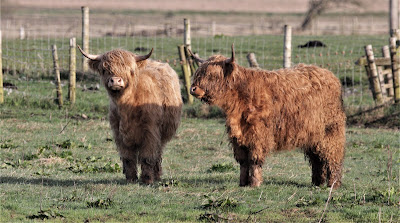Storm Dudley is here, closely followed by Storm Eunice, the two courtesy of westerly gales from the Atlantic Ocean. Thank you America, but don't send us any more, we have plenty of wind generation from our UK politicians.
Oh how we laughed when in Wales and at the first puffs of Dudley, a 2 megawatt 300 ft wind turbine fell over like a fading Welsh daffodil. A two megawatt windmill is made of 260 tons of steel that require 300 tons of coking coal, all mined, transported and produced by hydrocarbons. A windmill could spin (but only on windy days) until it falls apart and not generate as much energy as that invested in building it. Some things never add up do they?
Windless Turbines
Regulars will by now have guessed that bird ringing news is non-existent, waiting as I am for the weather to subside and for APHA/DEFRA to pull fingers from their collective backsides and allow us bird ringers to collect urgently needed data.
There's little to report from this week's grey affairs. A trip with pal Andy to a new Linnet site down South and out of the 10Km zone centred on Pilling produced a whacking count of 500/600 Linnets and permission from the farmer to catch said birds whenever we liked. We explained that time is of the essence and that as early as 1st March many Linnets will be heading back from whence they came. Andy followed up a day or two later by cutting rides through the seed plot for the day that warming sun-spots might allow us a visit.
The day we visited there was a Kestrel targeting the field, perhaps not entirely
for the Linnets which move pretty fast at the sight of any raptor. More likely
is that the Kestrel sat motionless in the tree was on the lookout for mice and voles.
Kestrel
Farmer P showed us the Barn Owl's barn and then pointed us in the further direction of low buildings where Swallows and even Little Owls return year after year.
Barn Owl
Little Owl
Mr P shared our view that the cold spring of 2021 had resulted in less Swallows than normal but agreed that Spring 2022 could hardly be colder and more unsuitable for insect eating Swallows than the last.
Swallows
This is a traditional farmyard with oily rags and rusty tractors where the daily traffic of cattle plus gallons of now standing rainwater creates an insect rich sludgy mess irresistible to wagtails. Two or three Pied Wagtails and a single Grey Wagtail flitted around the yard, not minding our close proximity when so much food was on offer.
A winter farm hereabouts pretty much guarantees Pied Wagtails will be around with the occasional bonus of a Grey Wagtail. As an early breeding species the Grey Wagtail will likely head off in March whereas Pied Wagtails will nest on the farm in more than one or two pairs.
Grey Wagtail
Even now I’m reading of bird watchers, probably new to the
game, who confuse Grey Wagtail with Yellow Wagtail. But while Grey Wagtails are
present all year round in the UK, Yellow Wagtails spend the winter in deep Africa
and not the cold wet windy days of Lancashire.
There's a reminder here here of the differences in the two species.
Back soon we hope. Stay tuned.
Linking today with Eileen's Saturday Blog and Anni in Texas.




































































































